
Vault of HeavenA Chinese Art Exhibition to Celebrate the Year of the Dragon 05–07 july, 2024


Vault of HeavenA Chinese Art Exhibition to Celebrate the Year of the Dragon 05–07 july, 2024
Contemplate an object, and you see the beauty of the vault of heaven.
苍穹 觀一物,可見蒼穹之美。
fri 05 – sun 07 jul 2 Oxley Road, Hawthorn, VIC 3122
guan cenche zoe
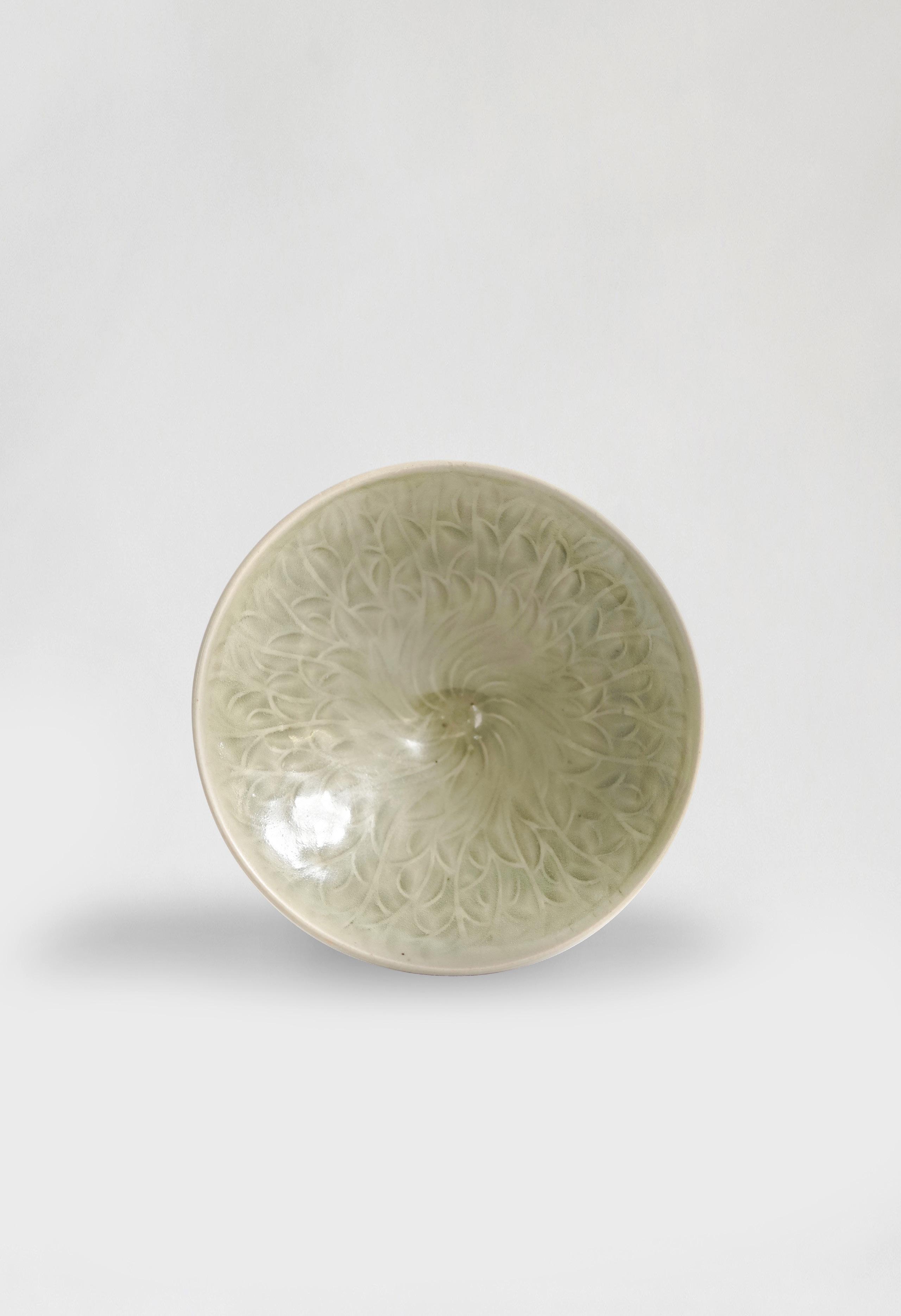

Objects from the East, admiring the natural order of heaven and earth. In ancient times, the first emperor Fu Xi was named the ‘Azure Emperor,’ embodying the Azure Dragon. Under the vault of heaven, the imagery of the Azure Dragon is inseparable from the lineage of China, carrying supreme imperial authority and the highest level of craftsmanship.
Over a dozen artworks and calligraphy in this exhibition represent Australia’s most significant collections of Asian art, offering a glimpse into the universe, a scale of dragon scales, discerning the profound to observe the world.
苍穹
前言
觀一物,可見蒼穹之美。
東方器物,追慕天地自然。遠古第一帝王伏羲氏名為【青帝】,身為青龍。蒼穹之下, 青龍的意象與華夏血脈本是一體,承載著至高無上的皇權和最高等級的工藝。
本次展覽的十餘件器物和書畫皆為澳大利亞最重要的亞洲藝術收藏,願作宇宙一眼, 龍鱗一片,見微知著,以觀天下。
cenche zoe curator
敬亭一回首,目尽天南端。
仙者五六人,常闻此游盘。
溪流琴高水,石耸麻姑坛。
白龙降陵阳,黄鹤呼子安。
羽化骑日月,云行翼鸳鸾。
下视宇宙间,四溟皆波澜。

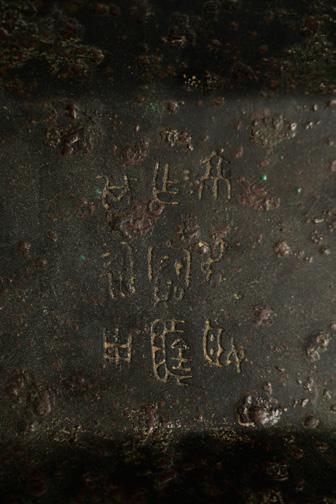

1
AN ARCHAIC BRONZE RITUAL FOOD VESSEL, FU, EARLY SPRING AND AUTUMN PERIOD, 6TH CENTURY B.C.
The vessel is cast to the side with a band of stylised wave pattern. The sides are applied with a pair of dragon loop handles, supported on four dragon feet. The interior centre is inscribed “京叔姬作寶簠其永 用”, reads “Jing Shu Ji Zuo Bao Fu Qi Yong Yong”, translated as “(Lady) Ji (of) Jing (land) made this precious Fu, to be used (for the family) forever”.
The vessel was made for a sacrificial ceremony when the royalty would offer sacrifices of food on the altar worshipping the deceased ancestors of the royal family and asking them to help them govern in peace and prosperity.
The vessel Fu originates from Prince Gong’s collection and is documented in the archives of Prince Gong Mansion in Beijing under the name Jing Shu Ji Fu. Comparing the line drawing of the vessel (Figure 2) and the rubbing of the inscription (Figure 3) provided in the archive with the present Fu, the two vessels exhibit nearly identical shapes, decorations, and inscriptions. This suggests that the present Fu is likely either part of a pair or belongs to the same set as the one formerly in Prince Gong’s collection.
The University of Wollongong thermoluminescence test on the clay residue under the handles confirms the dating of this vessel. 24cm long; 18cm wide; 8.7cm high
provenance
Ex Collection of William Ifould.
William Ifould is known to have visited London and New York in 1923 and 1936 and he was an avid collector. Ifould was appointed the Principal Librarian of New South Wales in Australia in 1912 and over some 30 years he developed the library system . He was also the force behind the building of the NSW library and wrote he would have liked to have been an architect if he had not been a librarian. He was a remarkably talented man. He organised the bronze doors in front of the library as shown in his picture above.
He spoke over 20 languages. He bred roses and was President of the National Rose Society in Adelaide and in Sydney.
He was also several times the Acting Director of the NSW Art Gallery.
When he died the Fu vessel was inherited by his son and then passed to his granddaughter.
春秋早期 公元前6世紀 京叔姬簠


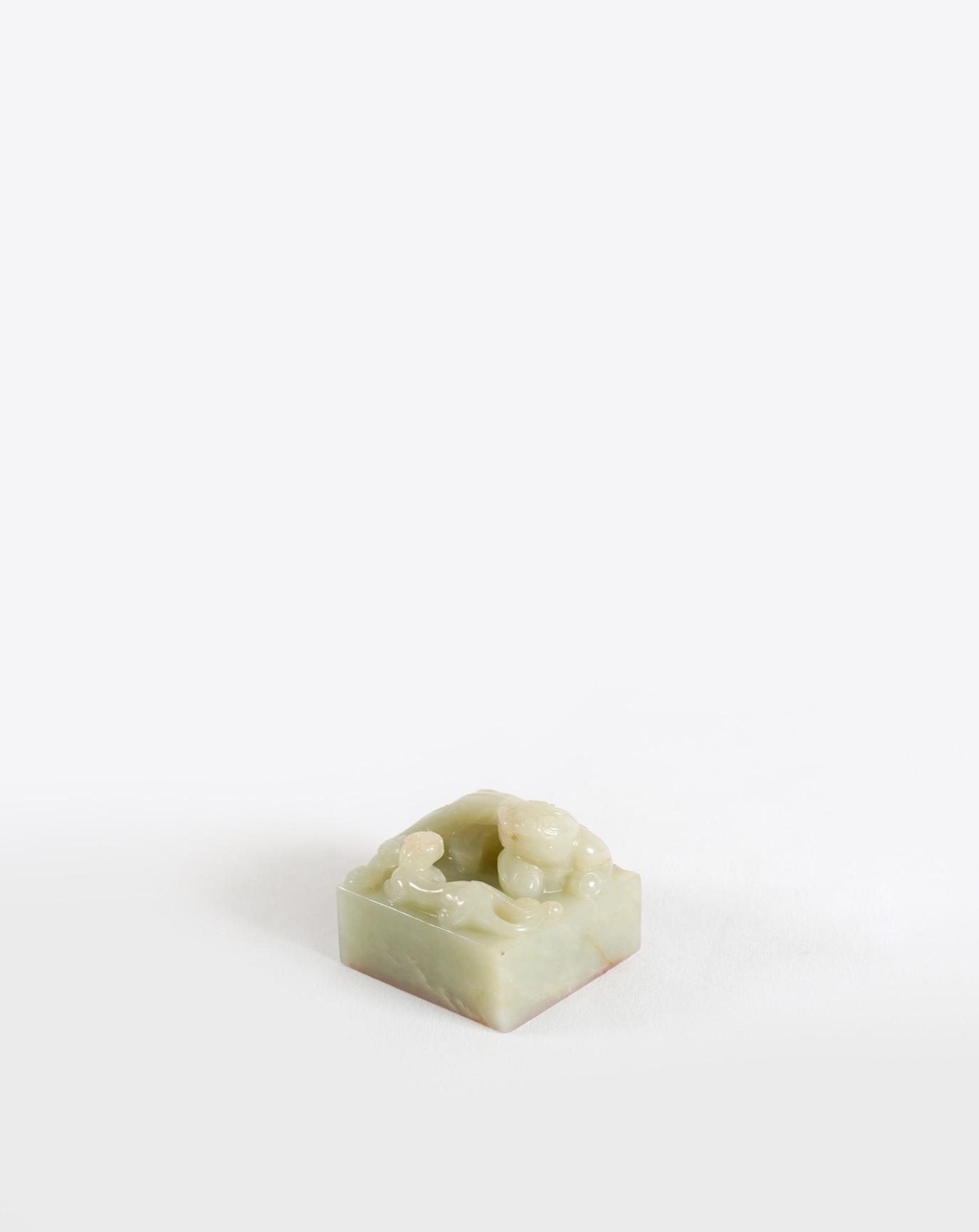
2 A FINE CELADON WHITE JADE CARVED DRAGON SEAL, KANGXI PERIOD (1662-1722)
Two chilong dragons sprawled across the top of the seal face to face, each one with legs extended in a crouch, body forming an S-curve from the head to the bifurcated tail, the facial features and tufts of fur incised, the seal face reads “Dao Tian Zhu Sheng Ren Wan Nian Chang Shou Chang”, translated as ““Pray for the blessings of heaven, wishing the saint longevity and prosperity for ten thousand years.” 5.7cm long; 5.7cm wide; 5.5cm high
清 康熙 清白玉雕「蒼龍教子」印玺 印文:「禱天祝聖人萬年長壽昌」
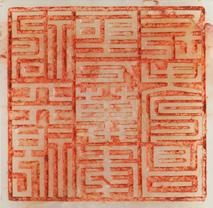



4
A RARE GREEN GLAZED COMPRESSED PEAR-SHAPED VASE, NORTHERN QI (550-577)
The squat globular body below a stepped neck and widely-flaring rim, all covered in a finely-crackled even lustrous green glaze stopping short of the splayed flat foot.
9cm high
The result of Oxford thermoluminescence test no. C122e14 is consistent with the dating of this piece.
provenance
Yun Gu Tang, London; Collection of Allan Rae, Sydney.
北齐 绿釉盘口瓶
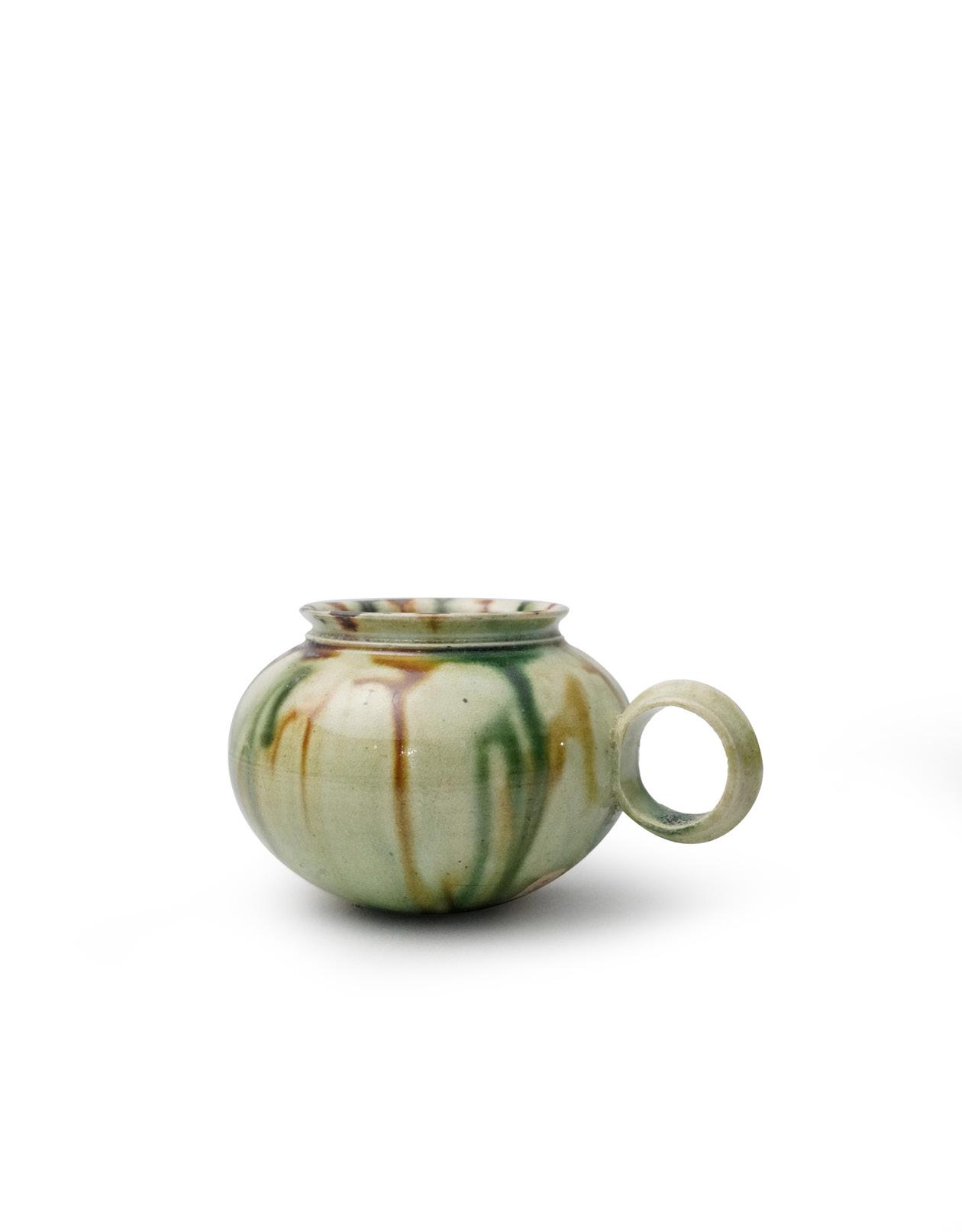

A PAIR OF VERY RARE DING-TYPE SMALL PERSIMMON GLAZED FLOWER SHAPED DISHES, SONG DYNASTY (960-1279)
8.8cm diameter
provenance
Raymond and Victoria Tregaskis Oriental Art, Sydney.
The Reid Family Collection, London and Sydney. 宋 定窯系紫金釉花型小碟一對
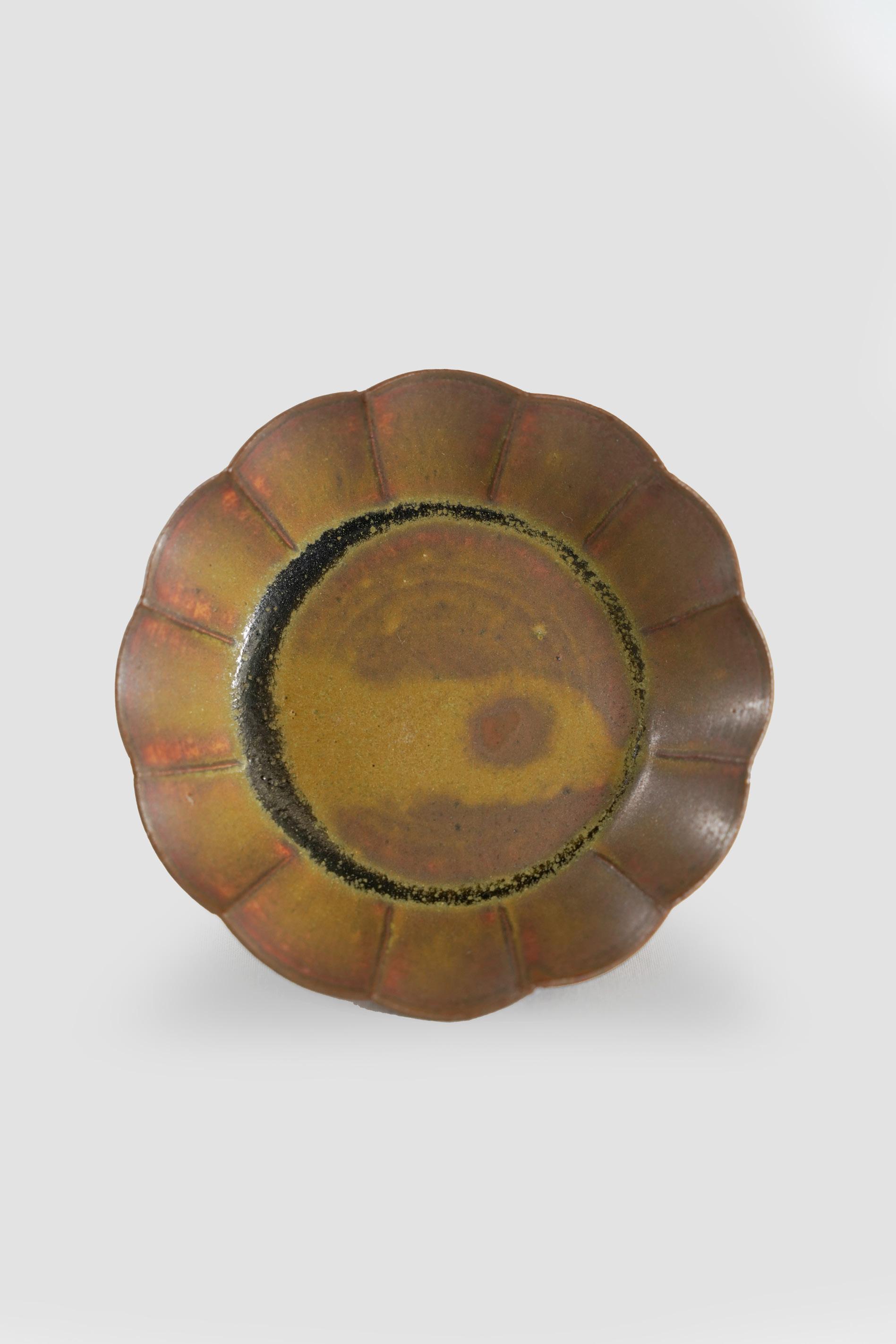
If you, the viewer have examined the bowl, would you consider the following helpful in determining what is depicted on the bowls interior….?
Firstly, if you accept that this bowl comes from the Yaozhou kilns and was moulded then an examination of the decorative interior can begin.
As you examine the decoration on the interior do you see a stylised vegetative or floral design?
If vegetative, then the S-shaped lines radiating from the bowls centre are stems/ twigs with alternate barbed stylized leaves, then the decorative scheme begs the question, what plant is depicted? Willow twigs and leaves have been suggested….
If a flower is depicted, then the s-shaped mid-ribs are petals radiating in three circular registers from the bowls centre…and a stylized Peony flower or chrysanthemum have been suggested.
If we return to the proposition that this bowl is from the Yaozhou kilns, then a resolution might be found in the archaeological evidence recorded in the volume on the Song, produced by the Cultural Relics Publishing House, Beijing .1998. entitled “The Yaozhou Kiln Site of the Song Period” produced by the Institute of Archaeology, Shaanxi Province and the Yaozhou Kilns Museum. {ISBN 7-5010-1103-6/K.443}
The line drawing of a stylized peony, 1. On page 627. And stylised peony petals in registers, No 3. On page 675 is insightful.
Jan Wirgin, has made an interesting and relevant comment on the popularly grown Chrysanthemums of the Song period in his book “Song Ceramic Designs” ISBN 0 906610 01X, “If we sum up what we have said about the chrysanthemum design on Song ceramics, we shall find their design is exceedingly rare.” And none are depicted on Yaozhou ceramics according to the archaeological evidence….
allen rae




7 A VERY RARE YAOZHOU MOULDED AND CARVED CONICAL CHRYSANTHEMUM
BOWL, SONG DYNASTY (960-1279) 15.8cm diameter
provenance
Capital Gallery, Hong Kong.



A CHINESE RARE BLUE AND WHITE DISH, TRANSITIONAL PERIOD (1620-1683)
The interior centre of the dish is decorated with a scene from Peach Blossom Spring written by the famous scholar Tao Qian (372-427 A.D.). It is depicting a sage standing in front of a cave, guiding a fisherman towards the mythical village of Peach Blossom Spring. Beside the sage, two adult figures lean forward attentively, while a young boy points with his toy windmill in the same direction, indicating the path to the fisherman. Above them, swirling clouds add to the scene’s atmosphere. On the underside of the dish, there is a continuous watery landscape featuring a figure in a boat and a solitary person seated on the shore. The base is with a six-character underglaze blue mark “Qi Shi Bao Ding Zhi Zhen” (translated as “Precious and treasured vessel of rare stone”) within a double circle.
The similar dish has the same mark, see Ming Wilson, Rare Marks on Chinese Ceramics: Joint Exhibition from The Percival David Foundation of Chinese Art and Victoria and Albert Museum, pl. 68.
17cm diameter
provenance
Anita Gray, London.
literature
Anita Gray, A Catalogue of Oriental Ceramics and Works , 1996, p. 29.
exhibition
London, Anita Gray, A Catalogue of Oriental Ceramics and Works of Art, 1996.
明清過渡期 「桃花源記」青花盤 「奇石寶鼎之 珍」款
In this stable and frequently depicted pose we see the Buddha Shakyamuni touching the earth with his middle finger to bear witness to his achievement of Enlightenment when challenged by Mara - the embodiment of selfish evil. The earth is said to have quaked in positive response to the Buddha’s touch and the demonic forces were quelled. This confirmation is reflected by the ultimate symbol of power to be found in Buddhism - the vajra or ‘Immovable Power’ symbol which lies horizontally in front of him at his feet. In this magnificent image we see the Buddha’s serene look of mastery and perfect realization quite clearly on his face which reflects the above narrative events quite perfectly. The Buddha may be said to positively glow with confidence and inner tranquillity. The artisan has created a most balanced and harmonious image of this most crucial period in the Buddha’s life and the earth-touching pose is one of the most frequent of these periods to be depicted. He wears the usual princely robes with their finely decorated edge - although at the time of this event he is more likely to have worn the more typical beggar’s rags commonly worn by ascetics at the time. The image’s hands are marvellously delicate and, along with the detailed chasing on the robe’s borders and the delicate folds of the robe on his shoulders reflect the extraordinary level of the artisan’s skill. The image has been ritually blessed by an officiating Lama and sealed by the symbol of crossed vajras referred to above as the ultimate symbol of power. There are no signs that the base plate has been tampered with and so it can be confidently said that the blessed substances and ritual writings are still contained within the image. (David Templeman) 21.5cm high
西藏 十五/十六世紀 銅鎏金釋迦摩尼佛坐像


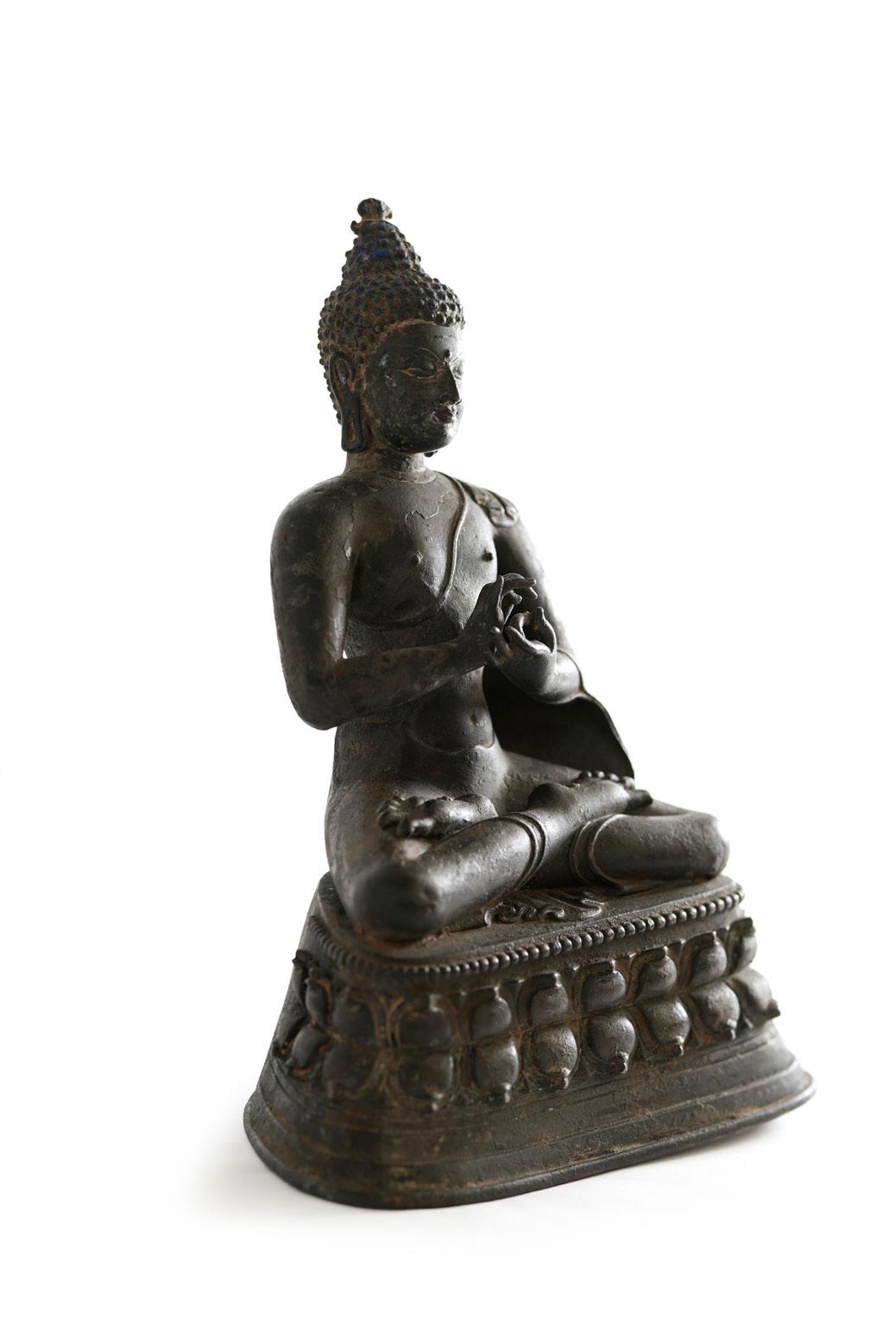
A VERY RARE TIBETAN BRONZE SEATED PREACHING BUDDHA, LATE 12TH/MID 13TH CENTURY
This most impressive image of the Buddha Shakyamuni a particularly good example of the level of skill which the Tibetans had mastered in just 2 centuries under their Nepalese and Kashmiri masters. The image is superbly balanced in style and flawlessly crafted and reflects more than a hint of the Gupta period style of Indian image making. In the present image we note Gupta features such as the closely clinging robes, the pronounced outwardly draped robe over his left arm and the swedge of the robe seen between the Buddha’s feet. The influence of Nepalese artisans may be noted in the manner that the Buddha’s eyebrows have been depicted. The Buddha’s hands are shown in the preaching gesture reflecting his teaching at Sarnath in northern India where he first turned the Wheel of the Buddhist Teachings. His sanctity is further reflected in the two lotus flowers representing purity which may be seen on the soles of his upturned feet. The traces of blue pigment seen in his hair are sure signs that the image was in Tibet where such additions of colour are commonly found at least until its relatively recent removal from that land. Decayed paint traces may be also noted on the Buddha’s face. There are signs in patches of metal oxidation which suggest that the image may also have been buried for safe keeping in Tibet’s recent turbulent times. The Buddha’s gently compassionate face suggests that this image was created by an artisan who themselves might have possessed some measure of personal insight into his teaching. (David Templeman) 36cm high
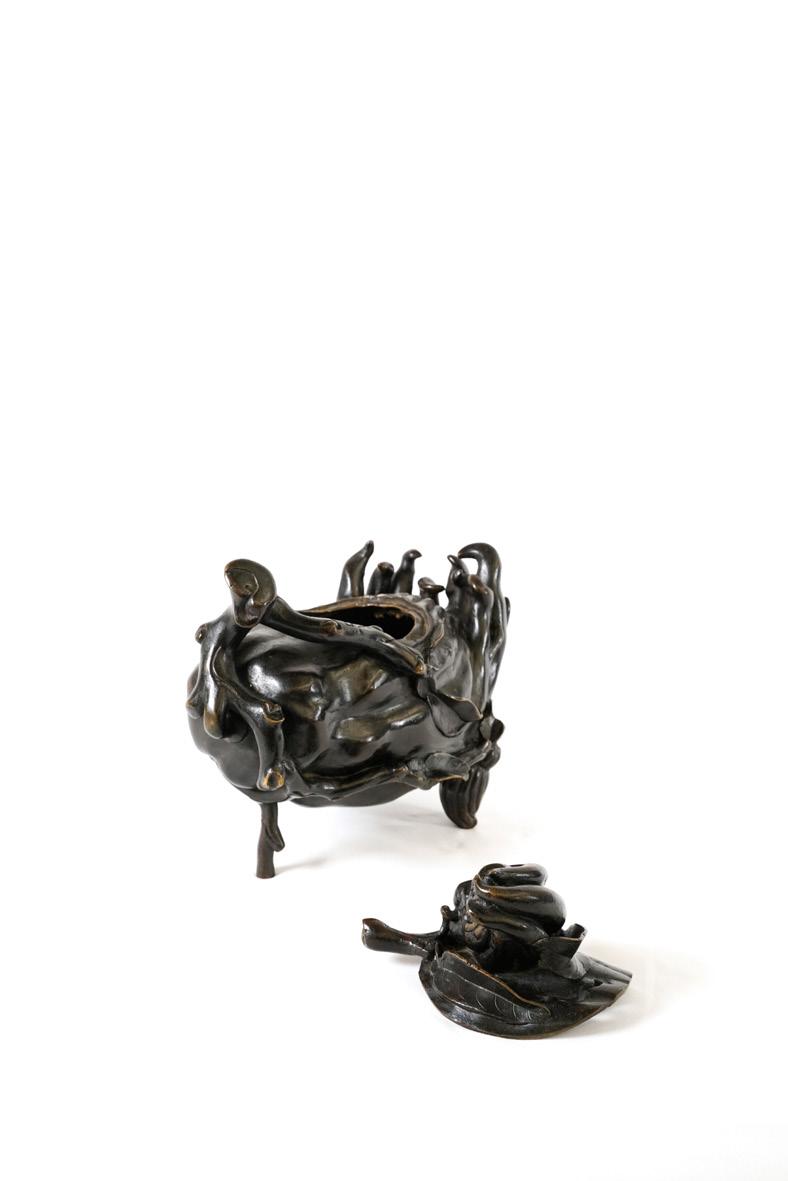
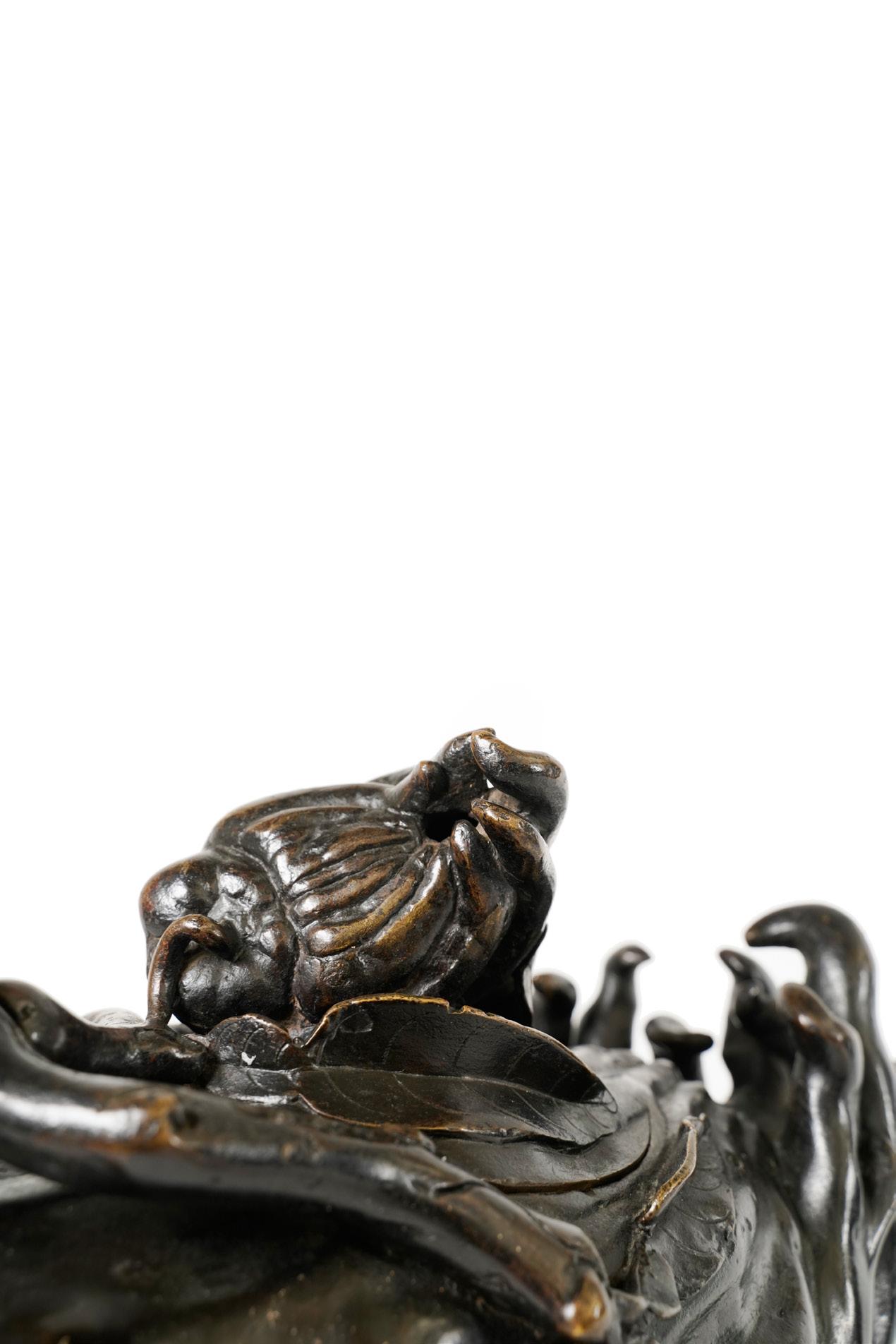

A FRAMED MANG DRAGON BADGE, QING DYNASTY, 18TH/19TH CENTURY
It is embroidered with a front facing mang, four-claw dragon, the border with flower decoration 39x34.5cm without frame
清 十八/十九世紀 刺繡蟒紋補子
ZHOU SHUNCHANG (1584-1626)
Couplet of grass-style calligraphy, Ink on paper, mounted as scrolls, signed by Zhou Shunchang, dated to the renxu year of Emperor Tianqi’s reign (1622), the 6th lunar month, and bearing three seals of the artist (2).
Each 127x29.5cm
provenance
Collection of Duan Fang (1861-1911), acquired between 1894 and 1922, thence in the family by descent.
Sotheby’s Paris, 23/6/2016, Lot 198.
周順昌 草書 對聯


14
HE SHAOJI (1799-1873)
Couplet of seal script calligraphy, Ink on paper, mounted as scrolls, Three seals of the artist, signed by He Shaoji, and bearing three seals of the artist (2).
Each 129.2x30.6cm
provenance
Duo Yunxuan Collection, labelled by Wang Fuan (1880-1960).
Poly Hong Kong.
何紹基 大篆 對聯 王福庵題簽
Running-Cursive Script Calligraphy, ink on paper, mounted as a hanging scroll, inscribed and signed, with one seal of the artist.
124.5 x 27 cm.
provenance
Christie’s Hong Kong, 1/6/2023, lot 858.
陳洪綬 草書


16
XIE ZHILIU (1910-1997)
Running-Cursive Script Calligraphy, Ink on paper, mounted as a hanging scroll, inscribed and signed, with two seals of the artist.
117.5x31.4 cm.
provenance
A private collection, Taiwan.
謝稚柳 草書
PU RU (1896-1963)
Autumn orchid
Ink on paper, mounted as a hanging scroll, inscribed and signed, with one seal of the artist.
58.2x31.2cm
溥儒 《秋蘭圖》
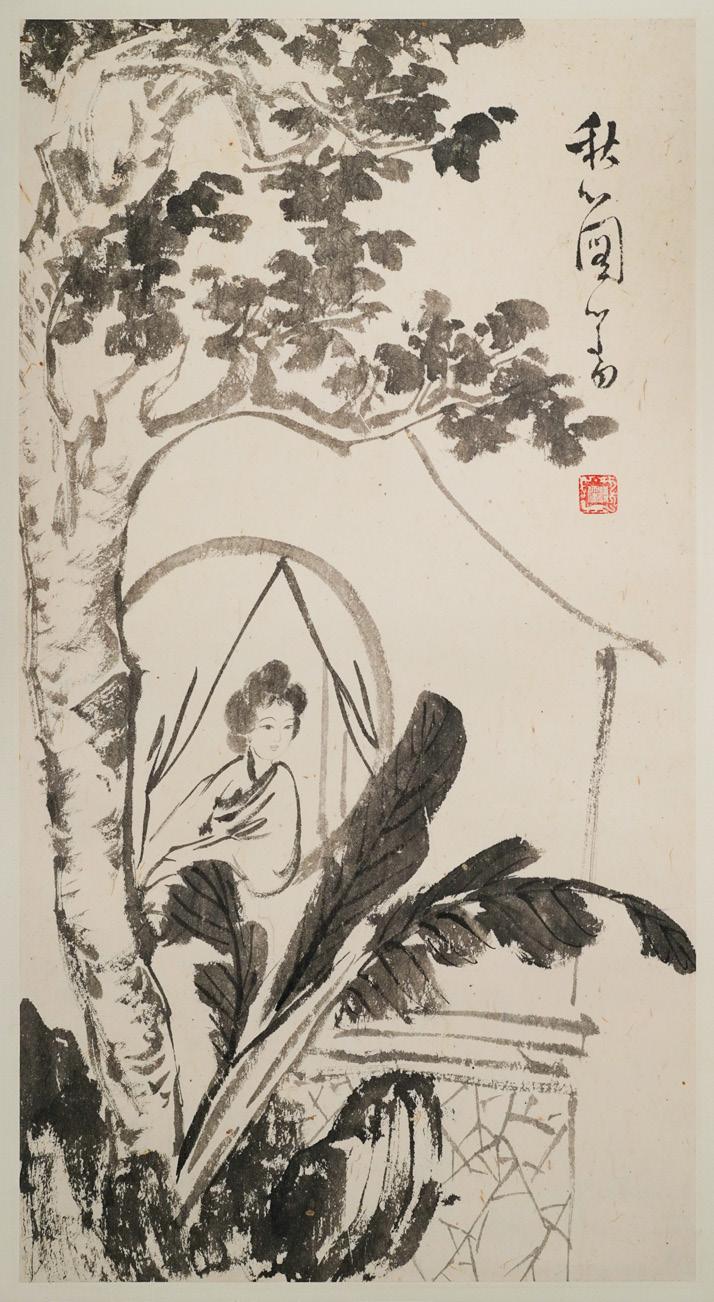
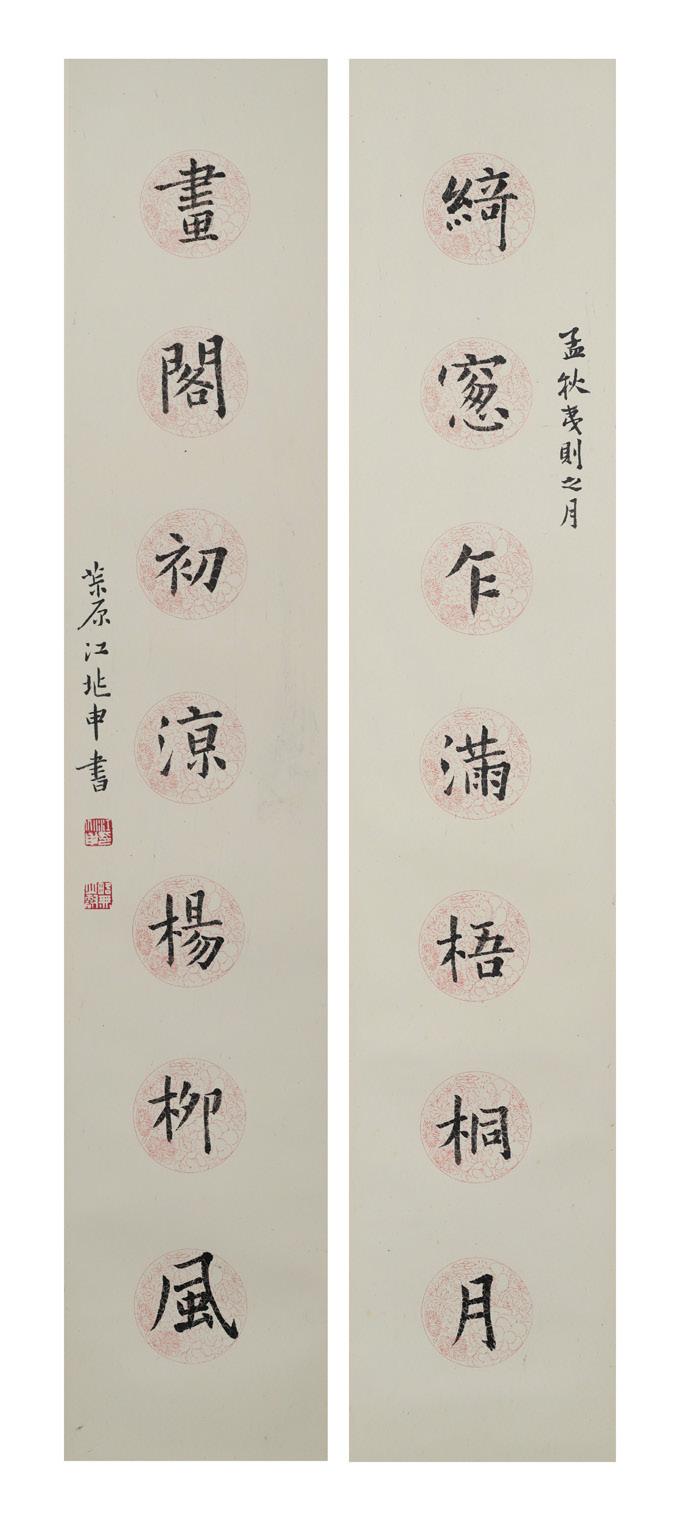
17B
JIANG CHAO-SHEN (1925-1996)
Couplet of regular script calligraphy
Ink on paper, mounted as scrolls, inscribed and signed, with two seals of the artist. each 63x12cm.
江兆申 楷書對聯
Ink on paper, mounted as scrolls, inscribed and signed, with two seals of the artist.
135.8x33.5cm
趙冷月 對聯

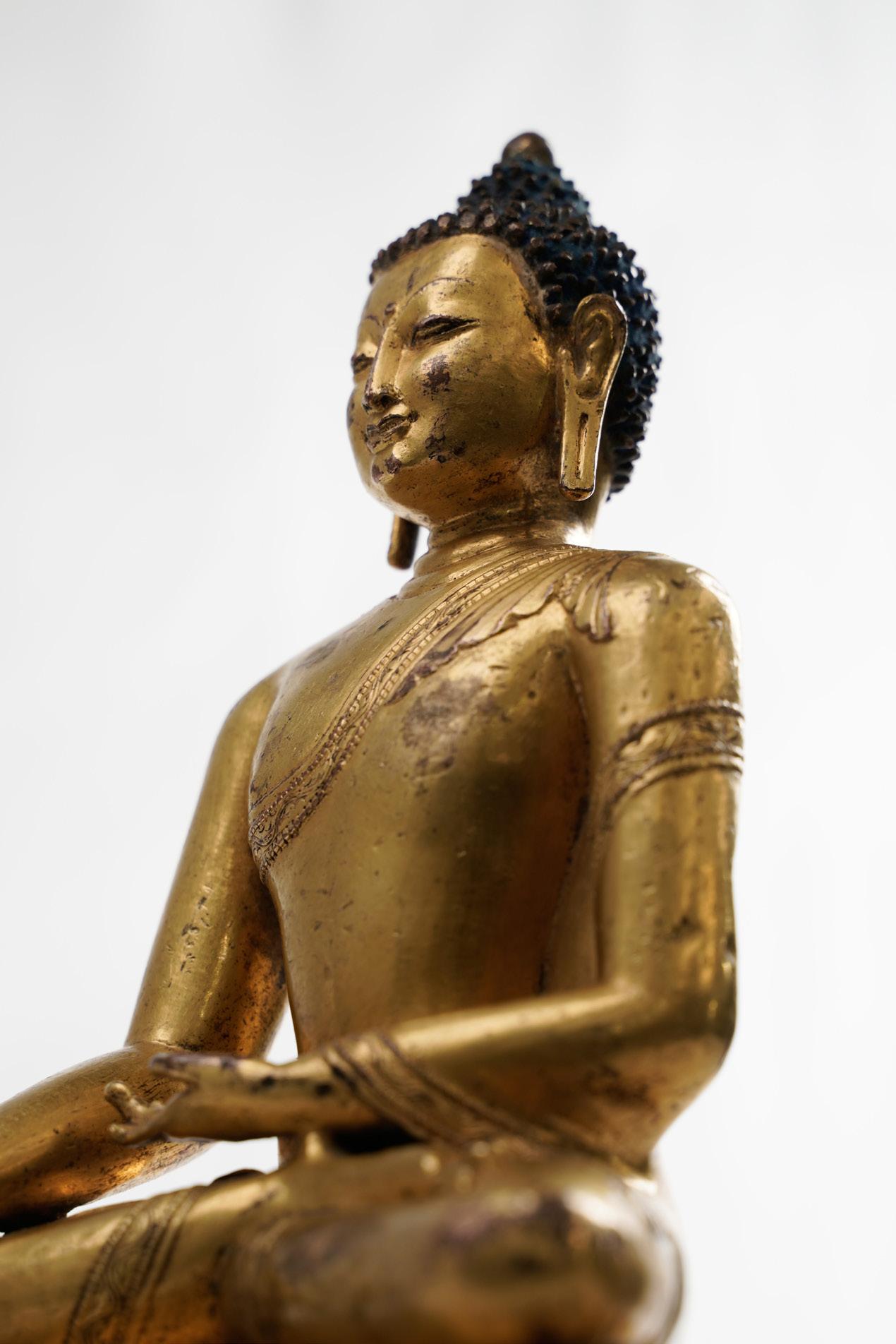
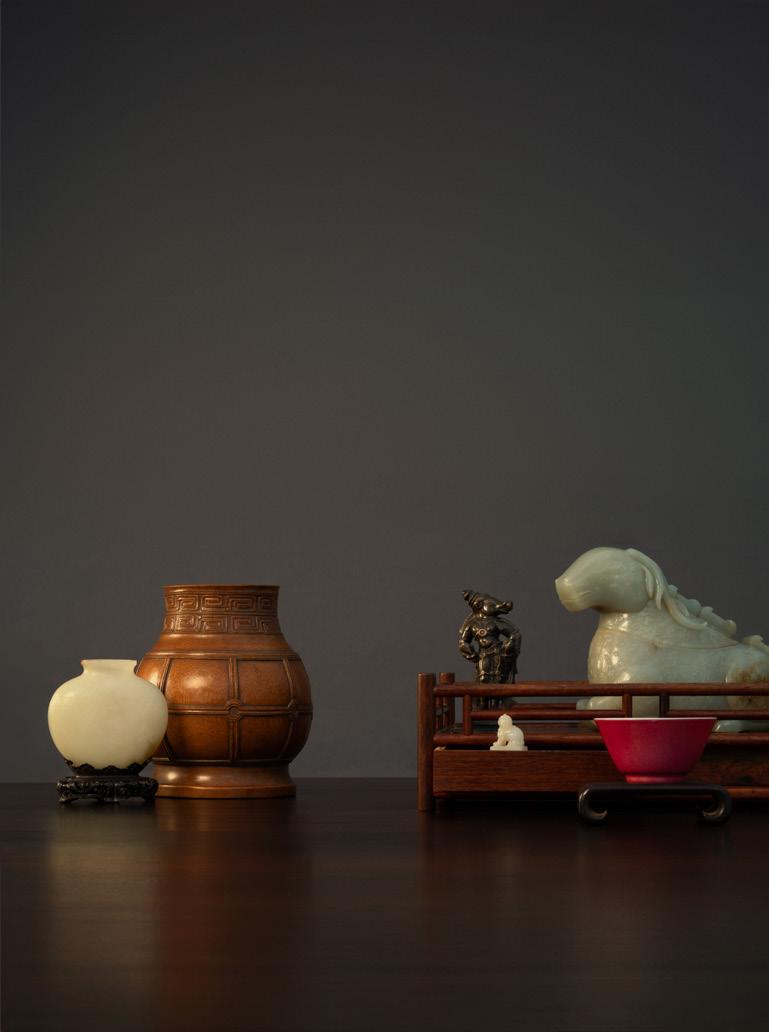
thanks to the following who have loaned pieces for this exhibition:
Vicki Tregaskis
Larry Lucas
Mae Li
Allan Rae
Taoran Ju
Rex Stevenson
Philip Korczynski
Henry Jo
Terry Wei
Luke Guan
Cenche Zoe
thanks to the following who have helped prepare this catalogue:
Allan Rae
David Templeman
Becoming Foto
Luke Guan
Cenche Zoe
melbourne
2 Oxley Road, Hawthorn, VIC 3122 (03) 9826 4333
sydney
The Bond, 36-40 Queen Street, Woollahra, NSW 2025 (02) 9362 9045
brisbane 54 Vernon Terrace, Teneriffe, QLD 4005 0412 997 080
adelaide 429 Pulteney Street, Adelaide, SA 5000 0419 838 841
perth 0412 385 555
info@leonardjoel.com.au leonardjoel.com.au